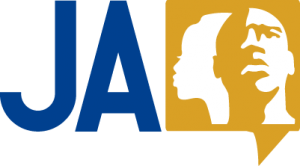Part II
Last week, we took a look at how right-wing politicians passed legislation assaulting the curricula of the state’s public schools and the accompanying attacks by vocal white supremacists doing the same. This week, we look at another kind of assault on the public schools which may be less obvious but is just as devastating.
This kind of assault is financial. The financial attacks are lodged primarily through two programs that were also put in place by the state legislature – the Adequate Education Program (MAEP) and the charter schools program.
The Adequate Education Program was authorized to help eliminate the gross discrepancies existing from one district to the next. The program mandated that funds be set aside based upon average daily attendance. These funds, along with the 27% match to be provided by the local community, were to be allocated by the state in order to provide what was needed to adequately educate the K-12 public school children in each district. The program began as a law that a small Democratic majority was able to get passed, the idea being a very good one. The assault, however, is manifest in the state’s subsequent refusal to fully fund the program for 23 of its 25 years of existence. Republican-dominated state legislatures have generally appropriated education funds after everything else has been funded.
This lack of support for public education is historical. Prior to the Reconstruction-adopted Constitution of 1868, the state provided no public schools. During Reconstruction, the first Black state superintendent, Thomas Cardozo, began raising the money necessary to operate the newly created public schools. Since Reconstruction, financing the schools has been more haphazard than consistent. At one point, the state was sued in order to require the full funding of the MAEP. Nevertheless, after the state Supreme Court ruled against the plaintiffs, the assault on public education – inadequate funding – was continued. Each year that MAEP has not been fully funded, schools have gotten further behind or been less able to perform up to the standards of the country or the state. According to one conservative estimate, Mississippi’s public schools have been underfunded by more than $6 billion since the inception of MAEP.
The problem of underfunding the public schools was made even more difficult in 2013. In that year, the Mississippi Charter Public Schools Act was passed. That act enables charter schools to receive a portion of the tax money that otherwise would go to the public schools of those districts. For example, if in a given year the Jackson Public School District (JPS) provides $10,000 for the education of each student but 1,275 of those students enroll in the charter schools, nearly $13 million of the state funds would be transferred to the charter schools, leaving JPS short by that much. Such an occurrence obviously cripples JPS in its efforts to pay teachers, purchase equipment and materials, maintain facilities, and so on down the line. It helps explain JPS’s financial predicament.
The state’s courts have ruled against the plaintiffs in a lawsuit designed to stop this misuse of tax-payers’ money. Tax-payers have their money, which was paid to the county, transferred to the charter schools without their approval despite the needs of the public schools. This means that millions of dollars are lost to the public schools each year. It has been happening for nearly a decade.
Such matters are likely to get worse as these charter schools expand. Midtown Public Charter School is trying to do so next year. The charter schools, therefore, represent an assault on the public schools. The schools themselves are not making a significant improvement in overall student achievement. Despite not having to meet the same requirements as the district’s public schools, they rate at the lower end of the evaluation scale. At the same time, they continue to make it difficult for the traditional schools to do their jobs, with less money from the already inadequate funds.
Many people who are 70 or older may remember how handicapped many Black schools were that used to meet in churches or other small facilities. They were often unable to hire well-trained teachers, were strapped to find money for textbooks, and often had no forms of transportation for the children. As these schools were consolidated, they became able to operate more economically and efficiently. The way in which the present charter schools siphon-off money from Mississippi’s underfunded public schools reveals the same type of growing situations as those early church schools.
Unfortunately, the underfunding of MAEP and the further drain of the charter schools appear to be deliberate assaults on the state’s public schools. The charter schools are undercutting and weakening the public school for no good reason. They are merely playing a role for many who have long opposed public schools, represented most visibly today by right-wing politicians and activists.
The underfunding of the schools, added to the assaults on their curricula and materials, cannot continue to go on unabated. Those who stand to lose the most – students from lower-income families in general and Black and Brown students in particular – need their communities and leaders to step-up and protect the public schools from these age-old but increasingly destructive assaults.







